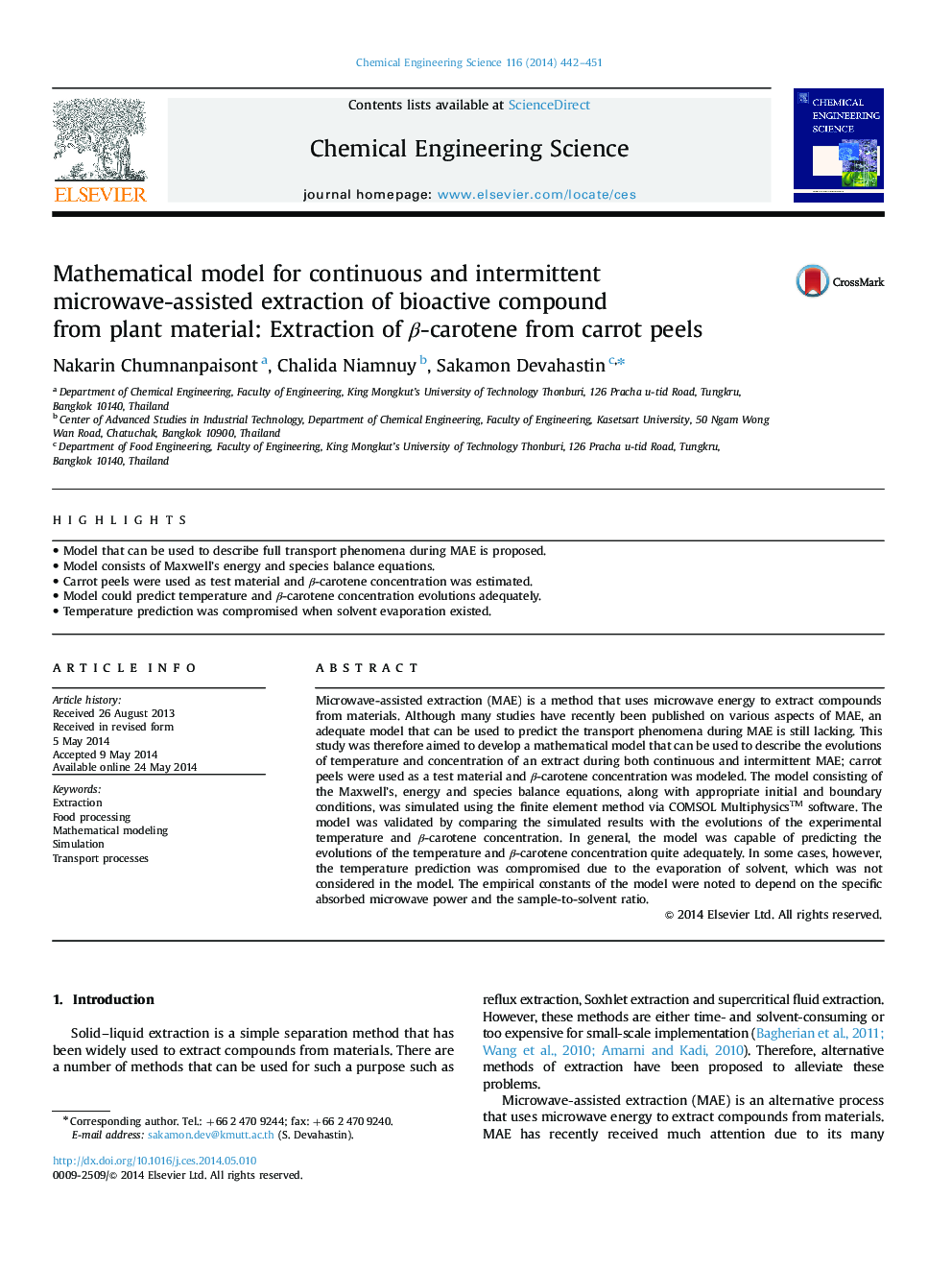| Article ID | Journal | Published Year | Pages | File Type |
|---|---|---|---|---|
| 6591061 | Chemical Engineering Science | 2014 | 10 Pages |
Abstract
Microwave-assisted extraction (MAE) is a method that uses microwave energy to extract compounds from materials. Although many studies have recently been published on various aspects of MAE, an adequate model that can be used to predict the transport phenomena during MAE is still lacking. This study was therefore aimed to develop a mathematical model that can be used to describe the evolutions of temperature and concentration of an extract during both continuous and intermittent MAE; carrot peels were used as a test material and β-carotene concentration was modeled. The model consisting of the Maxwell's, energy and species balance equations, along with appropriate initial and boundary conditions, was simulated using the finite element method via COMSOL MultiphysicsTM software. The model was validated by comparing the simulated results with the evolutions of the experimental temperature and β-carotene concentration. In general, the model was capable of predicting the evolutions of the temperature and β-carotene concentration quite adequately. In some cases, however, the temperature prediction was compromised due to the evaporation of solvent, which was not considered in the model. The empirical constants of the model were noted to depend on the specific absorbed microwave power and the sample-to-solvent ratio.
Related Topics
Physical Sciences and Engineering
Chemical Engineering
Chemical Engineering (General)
Authors
Nakarin Chumnanpaisont, Chalida Niamnuy, Sakamon Devahastin,
